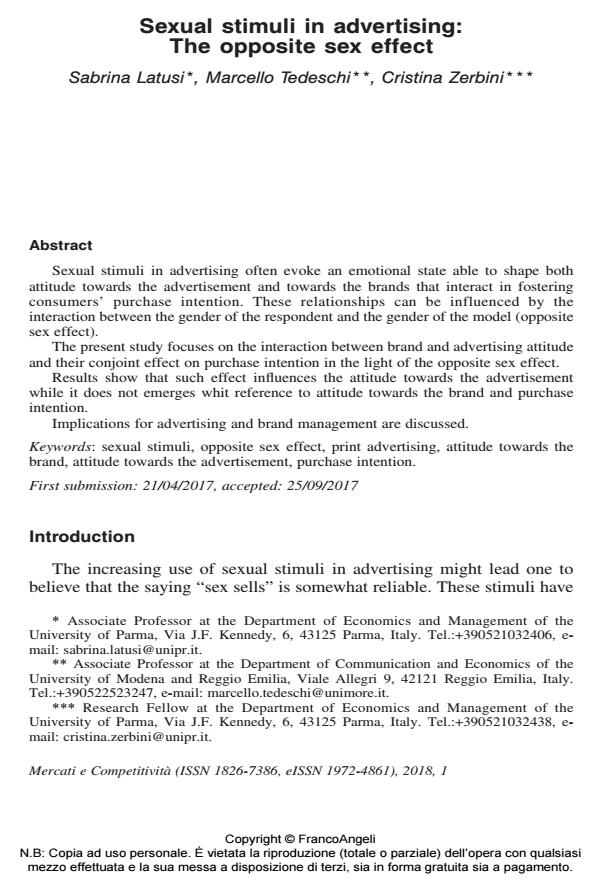Sexual stimuli in advertising: The opposite sex effect
Titolo Rivista MERCATI & COMPETITIVITÀ
Autori/Curatori Sabrina Latusi, Marcello Tedeschi, Cristina Zerbini
Anno di pubblicazione 2018 Fascicolo 2018/1
Lingua Inglese Numero pagine 16 P. 115-130 Dimensione file 1190 KB
DOI 10.3280/MC2018-001007
Il DOI è il codice a barre della proprietà intellettuale: per saperne di più
clicca qui
Qui sotto puoi vedere in anteprima la prima pagina di questo articolo.
Se questo articolo ti interessa, lo puoi acquistare (e scaricare in formato pdf) seguendo le facili indicazioni per acquistare il download credit. Acquista Download Credits per scaricare questo Articolo in formato PDF

FrancoAngeli è membro della Publishers International Linking Association, Inc (PILA)associazione indipendente e non profit per facilitare (attraverso i servizi tecnologici implementati da CrossRef.org) l’accesso degli studiosi ai contenuti digitali nelle pubblicazioni professionali e scientifiche
Sexual stimuli in advertising often evoke an emotional state able to shape both attitude towards the advertisement and towards the brands that interact in fostering consumers’ purchase intention. These relationships can be influenced by the interaction between the gender of the respondent and the gender of the model (opposite sex effect). The present study focuses on the interaction between brand and advertising attitude and their conjoint effect on purchase intention in the light of the opposite sex effect. Results show that such effect influences the attitude towards the advertisement while it does not emerges whit reference to attitude towards the brand and purchase intention. Implications for advertising and brand management are discussed.
Parole chiave:Sexual stimuli, opposite sex effect, print advertising, attitude towards the brand, attitude towards the advertisement, purchase intention.
Sabrina Latusi, Marcello Tedeschi, Cristina Zerbini, Sexual stimuli in advertising: The opposite sex effect in "MERCATI & COMPETITIVITÀ" 1/2018, pp 115-130, DOI: 10.3280/MC2018-001007